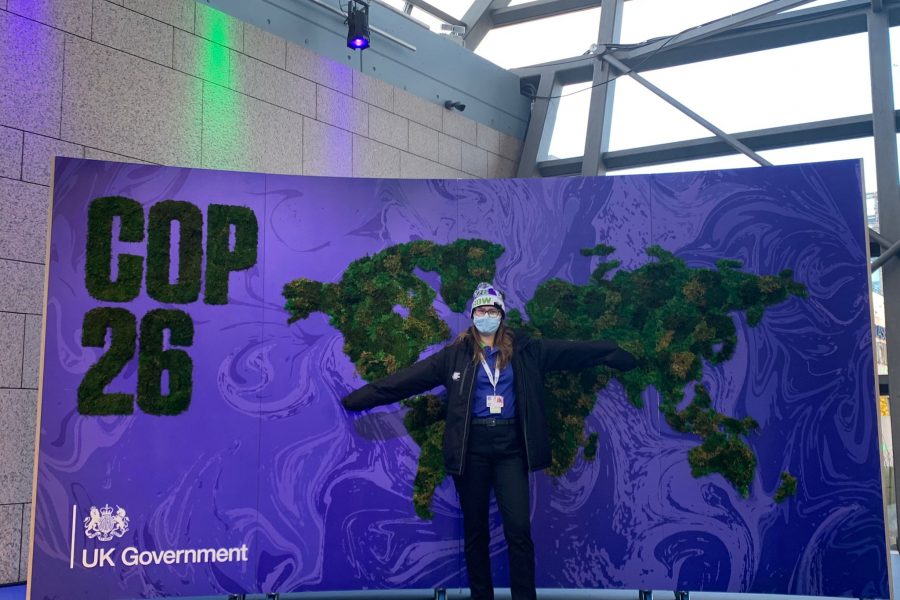
Public climate finance at COP26: still baby steps where a substantial leap is needed
23 November 2021
What was it really like at COP26?
24 November 2021By Joanna O’Flynn
Two days volunteering in the Green Zone at COP26 in Glasgow, pointing people towards the array of side events (and occasionally giving rushed directions to the nearest loo), gave me a prized insight into the people who engage in the climate question.
On November 3rd, I woke up at 5:45am for my first morning shift. I put on my recyclable uniform, which had been provided to each volunteer. For my two days of labour, I received two T-shirts, one fleece, a very soft hoodie, a pair of black trousers, a pair of waterproof trousers, gloves, a hat, a backpack, and a raincoat. Circular economy or classic consumerism? I suppose that I did need a new raincoat, and my most asked question was perhaps where one could buy a hat like mine.
Fully dressed and by now at Waverly Station in Edinburgh, I hopped on the right train to Glasgow that midway through the journey decided to be wrong. An announcement hailed through the compartment. This train was a diesel. All ‘climate people’ should be on the ScotRail train. My COP travel card was not valid. I made a mental note to take the electric-powered train on the way home.
Stationed inside the Green Zone, I talked to curious passers-by who were in search of what to do. A primary school teacher politely asked me to sign her poster. She was collecting signatures. One of her classes had voted that stopping deforestation was the most important solution for climate change. Quite fittingly, the day previously Brazil, among others, had signed the Glasgow Leader’s Declaration on Forests and Land Use. As I write, 137 countries have now signed the pledge.
At the end of my first shift, I took the opportunity to look around the exterior exhibits on electric and hydrogen vehicles. I had been told by fellow volunteers that the hydrogen fuel cell was worth looking at, but what really caught my eye was a model of a submarine cargo vessel. The founder & CEO of Oceanways talked me through their plans of creating a zero-emission hydrogen-powered submarine vessel fleet, that will transport cargo across the globe while cleaning up microplastics in the ocean (https://www.oceanways.co/). The biggest policy challenge, I am told, are questions of marine national security.
Darkness had fallen by the time my final shift ended on Saturday. On my journey back to Edinburgh (taking the electric train, of course!), I met a group of observers from the Blue Zone. Engaging in conversation, I learned that they had come to Scotland from Switzerland, representing the Basel Agency for Sustainable Energy (BASE). Their foundation is primarily concerned with the financial dimension of climate change. I was able to apply my newly learned environmental economics knowledge from this semester, to actively discuss climate change as an externality and the different market mechanisms that BASE employs as solutions to local climate problems.
Interesting to note was that despite extensive media coverage of the estimated one hundred thousand protestors in the streets in Glasgow that Saturday, the participants of the Blue Zone had heard little about it. This sheds light on the potent issue of the separation of decision-makers from those that are affected by their decisions.
While I cannot give an overview of the entire ten days in the Green Zone, I noted that while the events were generally quiet, those attending them were active individuals with a drive to make radical changes. All attendees were deeply invested in the same concerns that many of us now hold for climate and society. The question is what can and will be done once we leave the COP26 bubble?


